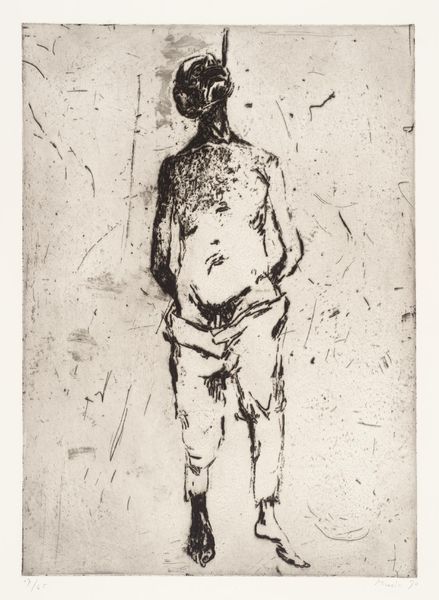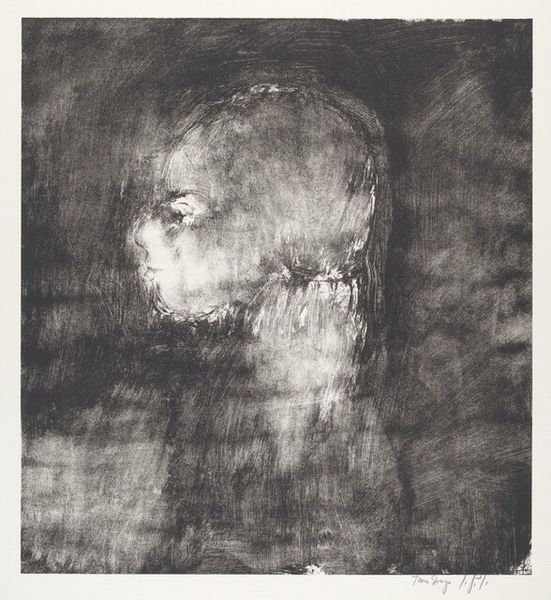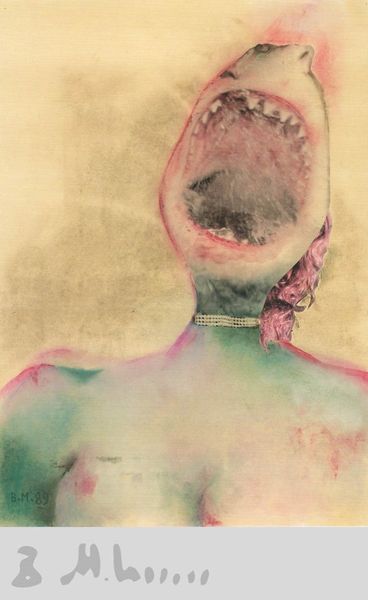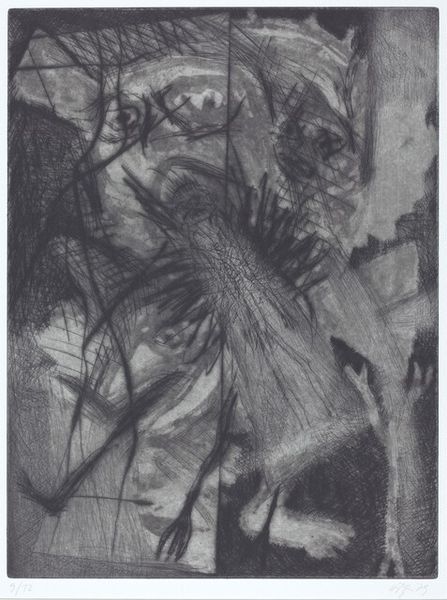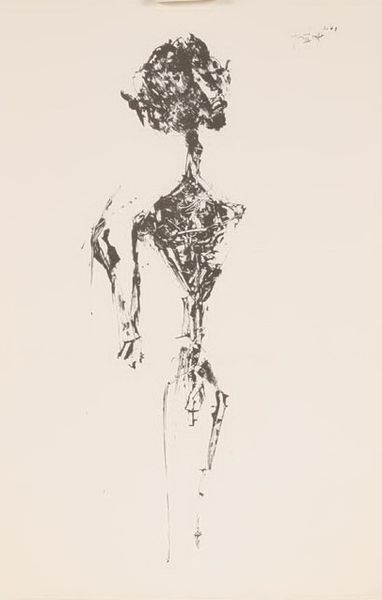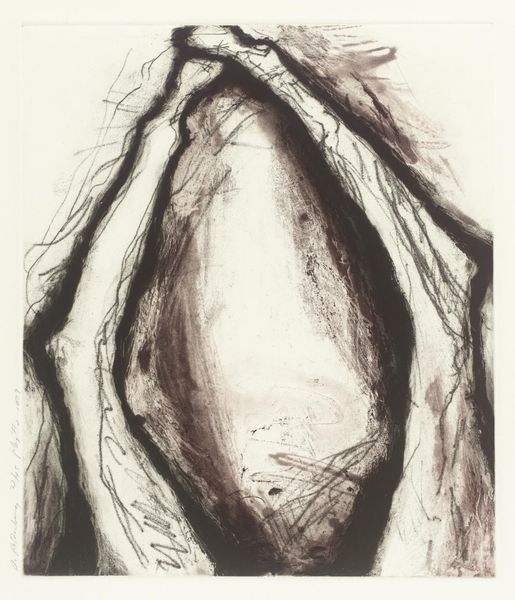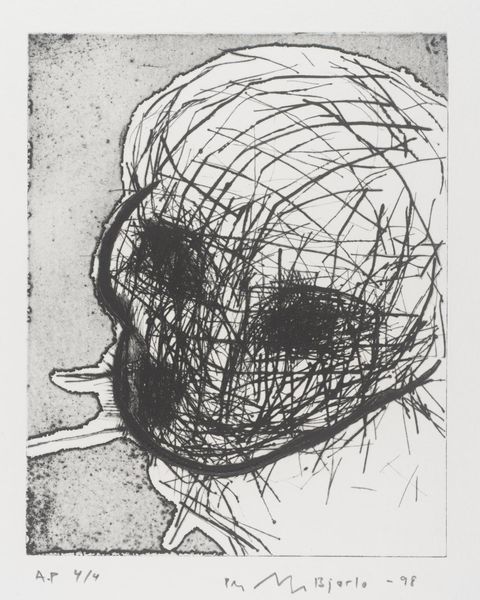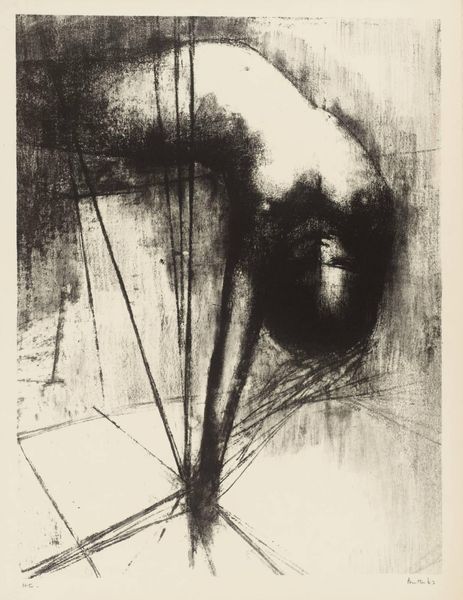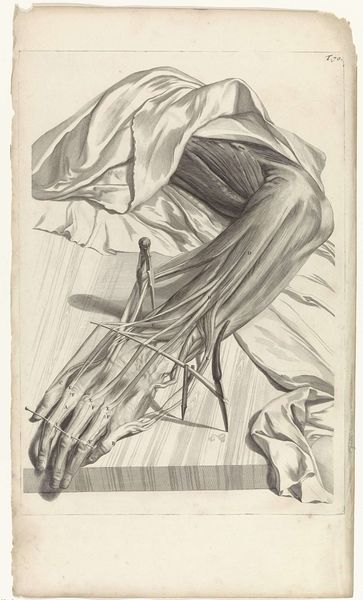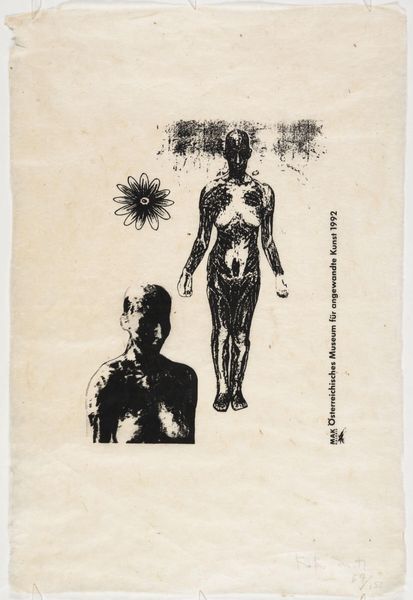
drawing, print, etching, sculpture
#
drawing
# print
#
etching
#
figuration
#
art-informel
#
sculpture
#
abstraction
#
surrealism
Copyright: Germaine Richier,Fair Use
Curator: This haunting print is titled "The Hydra," created in 1955 by Germaine Richier. It is an etching on paper, notable for its eerie imagery. Editor: My initial reaction is one of unease. The figure seems skeletal, almost decaying. The textures created through the etching process give it a gritty, visceral quality. What strikes you first about its form? Curator: It’s the process that interests me. The stark contrasts in tone and line weight, achieved through the biting action of acid on the metal plate, echo the socio-political climate of post-war Europe— a period defined by reconstruction and questioning what it means to be human. Editor: I see what you mean about the era’s influence; however, the composition grabs me first. The disembodied shape to the left echoes, and even seems to trap the organic figure; do you see a sense of isolation, a figure held captive? Also, is it, perhaps, a womb and the beginning of this hydra form? Curator: Potentially! This isolation resonates deeply with the anxiety of the period; artists grappling with the human form after unspeakable mass violence. "The Hydra," I think, represents the resilience and grotesque adaptation humanity needed to evolve. How do you see the themes playing out through Richier’s semi-abstract rendering? Editor: The surrealist influence is palpable; and this allows her to explore psychological themes more effectively. She distorts our physical expectations to give a form and shape to raw emotions and perhaps subconscious trauma? Curator: Yes, this interplay between organic form and surrealist vision really invites contemplation of the art. She transforms traditional modes of printmaking into this intense expression. Editor: Indeed, seeing it through both lenses adds significant depth; by considering the process and form, we’ve revealed its capacity to unearth the zeitgeist that continues to live in our modern consciousness.
Comments
No comments
Be the first to comment and join the conversation on the ultimate creative platform.
